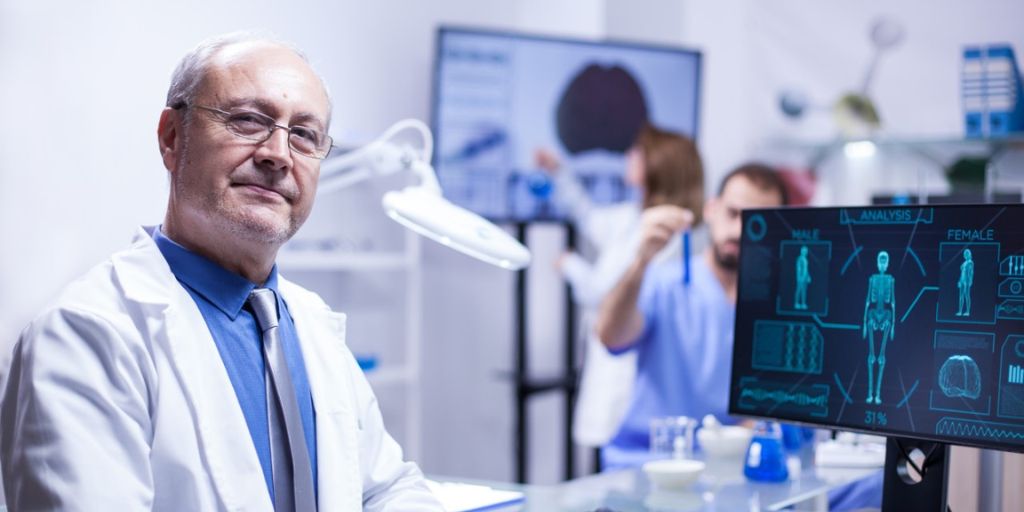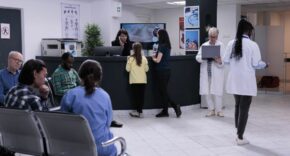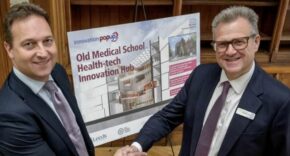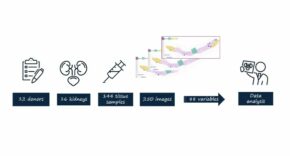
The NHS is suffering with a huge backlog of elective procedures due to the pandemic. This means that the share of individuals who are satisfied with the quality of NHS care has fallen to around 71%, and only 53% are satisfied with how the healthcare service runs today.
The good news is that the Government is focused on investing more in our healthcare services and healthcare technology in particular is being prioritised. The Spending Review 2021 announced a substantial increase in health spending, with day-to-day spend in 2024/25 expected to be 13% higher in real terms than in 2021/22. In fact, by 2024/25, day-to-day spending on health will be 39% of total day-to-day spending on public services, up from 29% in 2009/10.
IoT is enabling healthcare professionals to be more proactive
From a technology perspective, IoT is enabling better healthcare solutions and services. Today, IoT enables healthcare professionals to be more watchful and connect with patients proactively. Data collected from wearable IoT devices can help physicians identify the best treatment process for patients and achieve better outcomes. In hospitals, IoT devices tagged with sensors are used for tracking the real-time location of medical equipment like wheelchairs, defibrillators, nebulisers, oxygen pumps and other monitoring equipment.
With hospital visits limited, remote patient monitoring (RPM) and telecare services increased during the pandemic and, rather than revert to in-person appointments for monitoring or support, the use of RPM and telecare is expected to continue on that trajectory. The goal of most healthcare providers is to have connected healthcare in every home that needs it, which is more than most of us realise. For example, one in three people worldwide suffer from hypertension, a condition that requires accurate daily monitoring to prevent serious illness.
Conventional monitoring is resource intensive and costly
Conventional long-term monitoring can put a significant burden on healthcare providers and be restrictive and inconvenient for patients, which is why RPM and telecare are the way forward. They enable patients to be monitored and support delivered, even in hard-to-reach locations, delivering data back to medical teams to review and act on where necessary.
However, the success of these solutions depends heavily on device connectivity, accuracy, and ease of use for the target market, which is typically older people who may have lower confidence with technology. This means that healthcare providers must remove patient barriers by making healthcare technology easier to use, so that patients can just turn on a device and take a reading without having to worry about faulty Bluetooth connections.
This is important because – to truly revolutionise the patient experience – doctors need daily readings of blood pressure, blood glucose, pulse oximetry, weight, and temperature levels so they can quickly identify a change and send out a nurse, call a patient in, or alter medical care plans if and where necessary.
Ensuring patient trust
However, patients must also trust the device they are using, and trust is eroded if it frequently fails to connect and transmit accurate readings. This affects adoption and means patients and providers fall back on less convenient alternatives. Many remote patient monitoring companies use Bluetooth to provide device connectivity but find it doesn’t offer the reliability needed. From our conversations, this is a common issue, with many identifying cellular connectivity as the best option to provide the necessary coverage and connection reliability.
Digital switchover in 2025
Another healthcare trend that is driving cellular connectivity in telecare is the switch from analogue alarm systems to digital. A social telecare alarm device, installed in an individual’s home, makes it possible for individuals to call for assistance. These calls are answered by an operator in an Alarm Receiving Centre (ARC) who supports the individual to resolve the issue over the phone or they call for additional on-site assistance. Traditional analogue social alarm equipment relies on sending and receiving audible tones to communicate with the ARC enabling them to understand the type of alarm received and prioritise accordingly.
These social alarms have been in operation for around 50 years and have relied on analogue landlines for connectivity. Today, around 1.7 million older and vulnerable people in the UK rely on these systems. However, new legislation means that social healthcare commissioners must move quickly to adopt new digital systems as the analogue network will be switched off by 2025.
However, many have incorrectly interpreted this as a target date to be ready for the transition, when in reality it is the date of the final switchover of all existing analogue network infrastructure to digital. In fact, telephone exchanges began to transition in December 2020 and the pressure to switch to digital will only increase as a result.
This means many telecare systems will need to be upgraded or decommissioned to maintain services to users. Organisations must no longer procure social alarms that can only establish connections to analogue communications, they must procure hybrid alarms that communicate in both analogue and digital protocols through cellular connectivity.
Improved support performance and customer experience
Cellular connectivity is a superior connectivity solution compared to Wi-Fi because it offers network redundancy. If one network is down, a SIM can switch to another so there is no loss in connectivity. From a user perspective it is incredibly simple: the telecare solution has a SIM embedded that connects and works straight out of the box, as opposed to Wi-Fi, which requires passwords and more.
In summary, global healthcare spending could reach over $10 trillion by 2022. RPM and telecare are key growth areas but have historically witnessed issues with accuracy in the field. Now, enabled by the latest innovations in cellular IoT connectivity, these solutions will help pave the way for better, more reliable future healthcare provision.
Author: Nick Earle – CEO of Eseye













